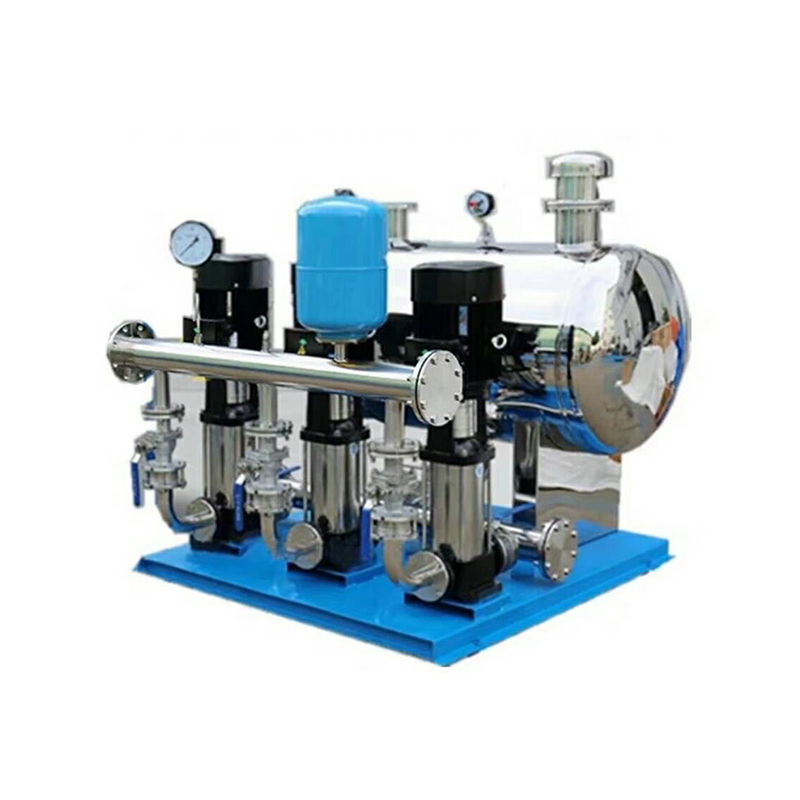QD High-Head Multi-Stage Submersible Pump for Water Management
The High-Head Multi-Stage Submersible Pump is an advanced solution eng...

Submersible pumps are crucial in a variety of applications, from water supply systems to irrigation and wastewater management. Among the different types of submersible pumps, the Monoblock Submersible Pump, Horizontal Submersible Pump, and Vertical Submersible Pump each have unique designs and purposes, which influence their performance and use. While all three types operate in similar ways, there are notable differences in how they function, how they are installed, and their typical applications.
The Monoblock Submersible Pump is a type of pump where the motor and pump are housed in a single, integrated unit. Unlike traditional designs, the motor and pump in a Monoblock Submersible Pump are closely coupled together, meaning the motor is directly connected to the impeller shaft, making it a compact and efficient design. One of the key benefits of the Monoblock Submersible Pump is its simplicity. Since the motor and pump are housed in one unit, installation and maintenance are often more straightforward. This design also allows for a more compact system, making it ideal for smaller installations where space is a concern. The Monoblock Submersible Pump is often used in residential, industrial, and agricultural applications where reliable water transfer is needed without requiring complex installation processes.
On the other hand, both Horizontal Submersible Pumps and Vertical Submersible Pumps typically have separate motor and pump units, with the motor often placed outside the water. In the case of the Horizontal Submersible Pump, the pump is designed to be installed in a horizontal position, typically in larger systems where space is less of a concern. The motor is generally positioned on the surface or in a separate housing, with a shaft that extends down to the pump impeller submerged in the fluid. The Horizontal Submersible Pump is ideal for applications requiring higher flow rates and where the pump needs to handle larger volumes of water, such as in irrigation or municipal water supply systems. Its design allows for a more stable and efficient operation, especially when pumping water over longer distances.
In contrast, the Vertical Submersible Pump is installed with the motor positioned vertically above the pump body, and the pump's impeller is submerged in the water. This design is often used in deep-well applications or where a smaller footprint is required. The Vertical Submersible Pump is effective at pumping water from deep sources, as it can handle high head applications efficiently. The motor and pump are generally mounted in a vertical orientation, which reduces the need for extensive piping and mechanical components, offering a more straightforward and space-saving solution.
One of the main distinctions between the Monoblock Submersible Pump and more traditional Horizontal Submersible Pumps or Vertical Submersible Pumps is the way they handle mechanical forces and energy efficiency. Since the motor and pump are integrated in the Monoblock Submersible Pump, the unit is typically more energy-efficient, especially in smaller-scale applications. This makes the Monoblock Submersible Pump a preferred choice for residential and smaller agricultural setups. However, for larger, more industrial applications that require higher capacities and the ability to pump water over longer distances, Horizontal Submersible Pumps and Vertical Submersible Pumps offer greater flexibility and efficiency, as they can handle higher flow rates and pressures more effectively.
In conclusion, the choice between a Monoblock Submersible Pump, Horizontal Submersible Pump, and Vertical Submersible Pump depends largely on the specific requirements of the installation. The Monoblock Submersible Pump is suited for applications that prioritize compactness, ease of maintenance, and energy efficiency in smaller systems. Meanwhile, Horizontal Submersible Pumps and Vertical Submersible Pumps are better suited for larger-scale operations that require higher capacities, higher flow rates, and more durable setups for long-term use in industrial or agricultural contexts. Each type of pump offers distinct advantages based on the application, water source depth, and system requirements.